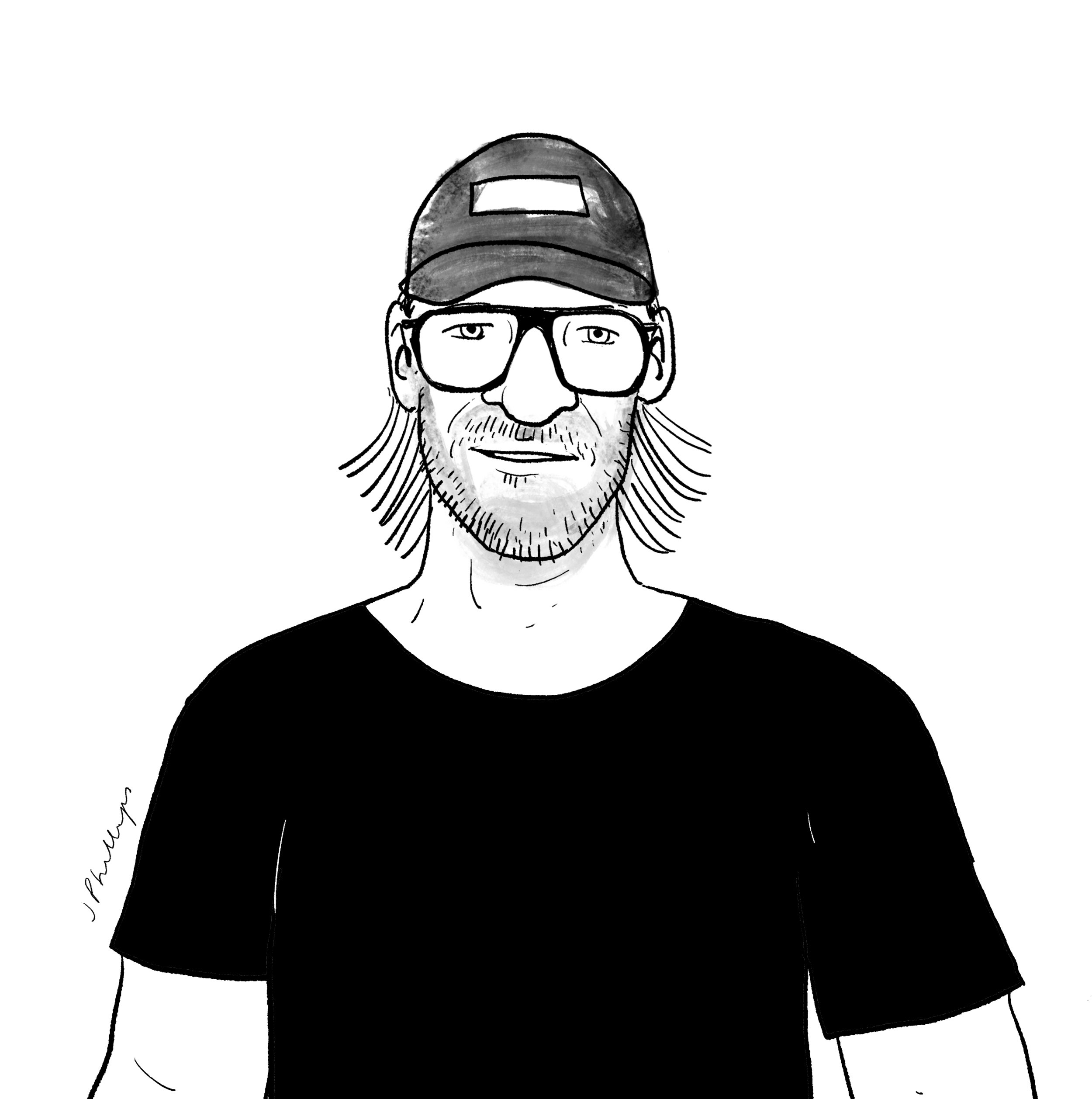Christian Witkin, Photographer
Illustration by Jeffrey Phillips
Aperture Monograph,
by Diane Arbus
"My father's a painter. He always educated me through his books that inspired him. He gave me a book which I believe he actually stole from the library. He used to be a professor at Syracuse for 40-odd years, and he just assumed that he could keep books. But it was Diane Arbus' Aperture Monograph, her very first book that was published just after her death. It left a big impression on me, and it wasn't until a few years later when I got into photography at 17 that that book really stood out, but in a very subtle way; it sort of came out. Until years later I opened up the same copy and said, 'My God. This has really influenced me on a sort of unconscious level.' The succinct power of the portrait in its beauty and its ugliness. Certainly, that book has been very important to me and I think she's just an extraordinary artist."
On Photography,
by Susan Sontag
"The second book around a little later was a non-fiction book by Susan Sontag called On Photography. That's a non-visual book that's more about history of photography and cinema photography, and it's a very powerful book. In fact, I'm planning to reread it. I have it next to me on my bed. You just felt, as an aspiring photographer, that how she was presenting photography through history was incredibly powerful ... through Susan Sontag's words and all that. It was a tough one to read because she's a very intellectual writer. I was rereading the paragraphs once, twice, but it definitely gave me a real good sense of history, which is what we're talking about. Which is the whole point to this concept on books and the younger generation. I'd say if there was one book that's not a visual book but a photographic history book, this is the one. It's not just capturing images, but understanding who are important photographers or cinema photographers, directors. Very important book."
Many Are Called,
by Walker Evans
"His archives are extraordinary. He basically sneaked pictures on the subway in New York. It's an astounding book. Every image is so powerful, especially because they're not aware of the fact that they're having their portrait taken by him. He had basically an opening in his jacket. It was wintertime for the most part, and he stuck the lens through that at a low angle and then he had a long cable release, so he roughly set the zonal focusing. It's all black and white and it's such a stunning book. He's just one of those photographers who just goes beyond the portrait. To be a good portrait photographer, you have to really love people, but love is kind of dubious, because you also have to be aware of ugliness. It can't just all be beauty. I think those emotions form really a powerful basis of really powerful photography."
People of the 20th Century,
by August Sander
"August Sander would be another photographer who has made me think about composition and the beauty of portraiture with his work. I think it's the second largest photographic project in the history of photography. It's something like 11 books. It's all portraits and group portraits of '20s, '30s Germany. It is just stunning, the sensibility that this man brought to it. He broke it down in different genres like the worker, the farmer, the upper class. It's just stunning. It's very German in a way."
The North American Indian,
by Edward S. Curtis
"It's probably photography's largest photographic project that was amassed, and he was pretty extraordinary. He really took an incredible liking to this project, and he would go beyond these large format portraits of the American Indians and the various tribes, but he would actually go into deep detail in his notebook about various traditions, whether the preparation of food or the skinning of an animal or whatever. He was not just a photographer but also an anthropologist. The portraits in the book are striking. They are a little bit older now and have the sepia look; sometimes it's a little tired. But the portraits themselves are still really powerful, and also the dedication and the passion for his work. For me that goes a long way and it's just another incredible book. Very special and I bought a little biography on him, and that sort of gave me much more detail about this huge project. He actually went as far as getting funding from affluential people in New York society. He went to JP Morgan to underwrite a good part of the project, and he had to prove to Morgan his passion for the project and the meaning for it. Curtis just laid it down and he got the money."







